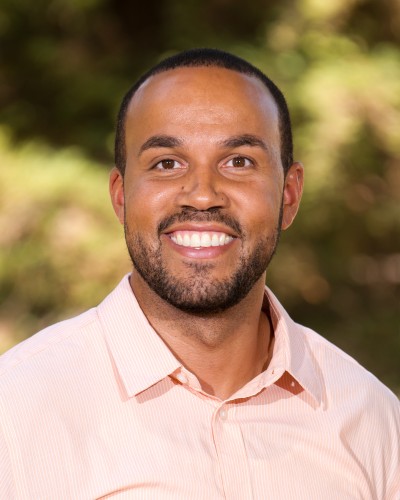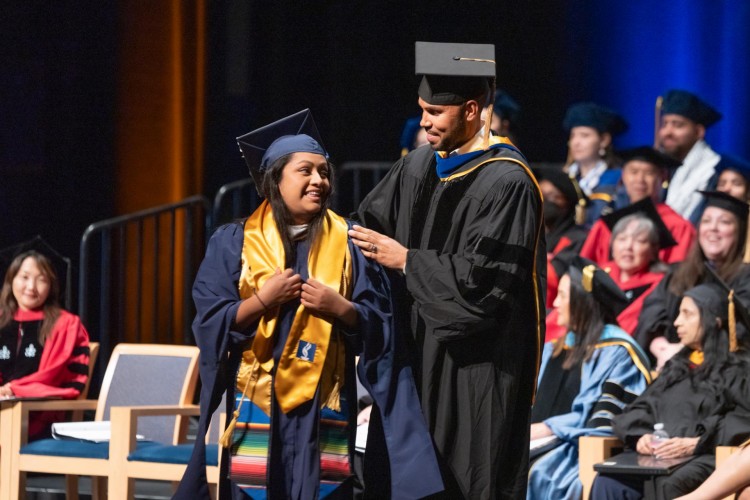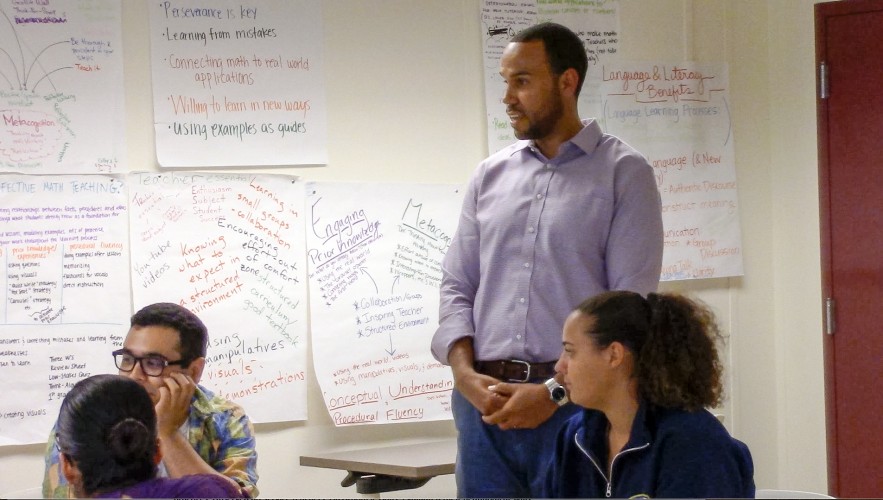Matt Wallace Appointed Associate Professor of Teaching in Education
 Dr. Matt Wallace has been
appointed Associate Professor of Teaching in Education as of July
2023. Wallace graduated from UC Davis with a BS in psychology and
a minor in math, earned his teaching credential and MA at San
Francisco State University, taught in high schools in the Elk
Grove and Washington Unified school districts for eight years,
and then returned to UC Davis for his PhD in mathematics
education.
Dr. Matt Wallace has been
appointed Associate Professor of Teaching in Education as of July
2023. Wallace graduated from UC Davis with a BS in psychology and
a minor in math, earned his teaching credential and MA at San
Francisco State University, taught in high schools in the Elk
Grove and Washington Unified school districts for eight years,
and then returned to UC Davis for his PhD in mathematics
education.
After graduation, Wallace held roles in UC Berkeley’s Math for America and Cal Teach, as well as CSU East Bay’s teacher education department. He then joined the School of Education faculty in 2012 to serve as a Lecturer/Supervisor and cohort lead in the Math Credential Program. He is also the primary faculty advisor for the MA program and coordinates the annual MA symposium.
“What’s great about math are the challenges,” Wallace said, “because that moment when you have a breakthrough is such a rewarding experience. Math seems to constantly provide those challenges and breakthroughs for me. There are other challenges in life, but math always gives me an opportunity to mull things over and come at the problem in a different way.”
Wallace enjoyed teaching entry-level high school math and didn’t expect to go back to graduate school, let alone to become involved in teacher education. Then he had an opportunity to teach upper division classes, and he got to teach some of his previous students again. “I thought my students were doing great work,” he said. “They had earned their As in their freshman year and here they were in upper division math classes…asking a lot of the same questions they’d had as freshmen. If I was worth my salt as a teacher they’d have new questions. I didn’t like that feeling.”
Wallace returned to UC Davis for his PhD as a way to answer his questions about teaching, and his dissertation focused on the experiences of preservice mathematics teachers as learners and the evolution of their assessment practices as educators. His research continues to inform his work with teaching credential candidates today.
 “I don’t think as educators we
spend enough time thinking about formative assessment through a
lens of equity,” he said. “Recently I did a project with my
students where we explored how one formative assessment strategy
might have more or less impact, depending on a student’s math
identity. We were thinking about how mistakes are and aren’t
normalized, and how for some students we might be doing more harm
than good to have them identify their mistakes… a student who is
really confident in math, who thinks mistakes are natural, would
benefit from that same formative assessment strategy.”
“I don’t think as educators we
spend enough time thinking about formative assessment through a
lens of equity,” he said. “Recently I did a project with my
students where we explored how one formative assessment strategy
might have more or less impact, depending on a student’s math
identity. We were thinking about how mistakes are and aren’t
normalized, and how for some students we might be doing more harm
than good to have them identify their mistakes… a student who is
really confident in math, who thinks mistakes are natural, would
benefit from that same formative assessment strategy.”
The theme of normalizing mistakes in math runs through much of Wallace’s approach. “What I love about writing is that we’ve normalized the revision process,” he said. “You start with a rough draft, you get feedback to improve it and make revisions, and then the final draft is way down the road. In math, everything seems to be the final draft—once you’ve done a problem that’s it, and you move on from it. So I’m really trying to make it more normal in math class to have rough drafts and to get feedback just like you would in English class on an essay. When you’re writing a proof or solving a problem, you try it, you get good feedback, and you refine it. We should make it normal for students to use that to advance, improve upon and revise their thinking, so that in students’ eyes feedback isn’t bad, or reflects on who they are as a mathematician.”
Wallace’s approach is rooted in the perspective that all students have their own mathematical strengths, and that teachers need to be able to identify those strengths and strategically incorporate them into their lessons. Teachers should welcome a variety of approaches to solving math problems, rather than requiring students to solve problems in only one way for them to be considered correct. Some students might do well at using formulas, for example, whereas others are better with diagrams, relationships or pattern finding.
“It’s really important that teachers not push students to a strategy that is not theirs,” Wallace said. “If they have another viable way of solving it, we need to really affirm and leverage that rather than trying to push them into something that doesn’t make sense to them. A really cool thing we do in my class is to compare and contrast methods—how might someone else do this problem differently vs. better or worse.” Looking at those similarities and differences makes for rich discussion and learning opportunities in both Wallace’s classroom and in his students’ K-12 classrooms.
 As someone who has worked in several
teacher education programs, Wallace particularly likes the UC
Davis model, in which instructors are also supervisors. “It means
that everything is working hand in hand,” he said, “so that we’ve
talked about something in methods class and then I can support
them at their school sites in bringing that to life. I can really
tailor to the needs of a particular school or classroom for that
particular student teacher to make it work. And then they can
bring the challenges they’re facing back to the methods class for
us to unpack together.”
As someone who has worked in several
teacher education programs, Wallace particularly likes the UC
Davis model, in which instructors are also supervisors. “It means
that everything is working hand in hand,” he said, “so that we’ve
talked about something in methods class and then I can support
them at their school sites in bringing that to life. I can really
tailor to the needs of a particular school or classroom for that
particular student teacher to make it work. And then they can
bring the challenges they’re facing back to the methods class for
us to unpack together.”
Wallace has taught students in the School’s MA program for more than a decade as well. “I’ve always really enjoyed that, because it gives me an extra year with our students,” he said. “We did all this work together in the credential program, and now I want to know what they took with them, what they’re still working on or thinking about, and what obstacles they’re facing. And it helps me because I get to see what other tools I might need to provide our credential students.”
Wallace’s goal is that his student teachers will have an impact on how their own students see themselves and what they’re capable of achieving. “I’m passionate about helping kids learn math,” he said. “I hope that all the students I work with will help their students realize their mathematical strengths. Not all their students will choose to enter into STEM fields, but hopefully they’ll understand that they are all capable of being mathematicians.”








